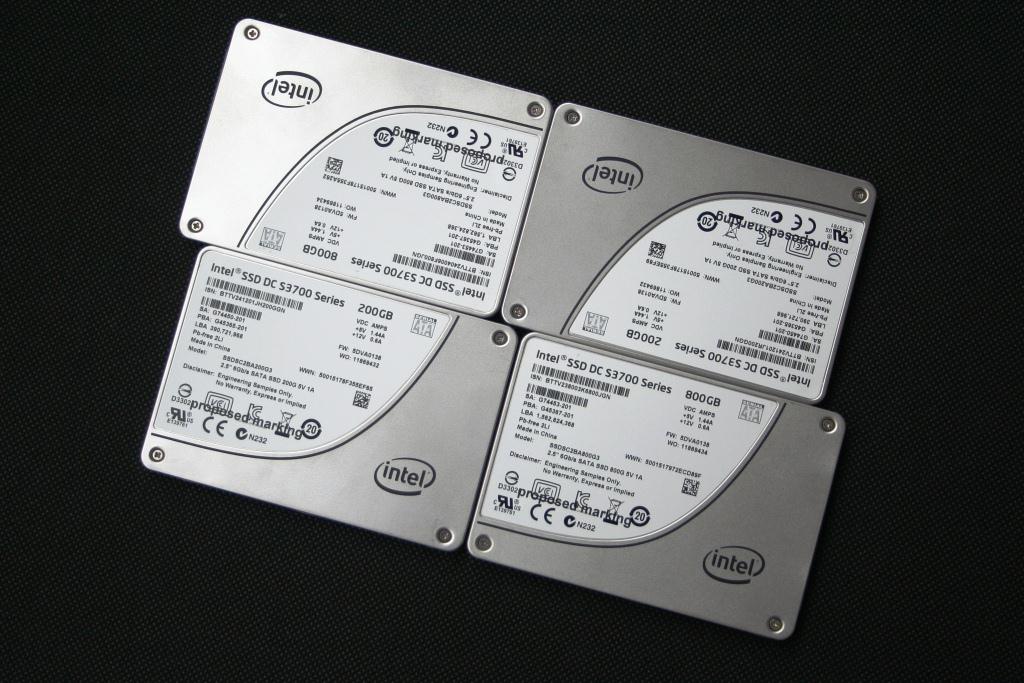REPORT ANALYSIS AND CONCLUSION
It is sometimes hard to believe that the world of solid state storage has made such rapid progress in just a few short years. No other part of a system has changed as profoundly as storage in some fundamental ways. CPUs, GPUs, PSUs, and RAM are better, but just incrementally. The first SSDs were little more than glorified USB sticks, but the intervening years have seen drives get better, faster, and stronger seemingly by the day. That progress cant continue indefinitely, for reasons both technical and economic. But while it lasts, drives like the DC S3700 will bring new forms of speed and longevity at progressively lower prices. It wasnt that long ago that a SSD cost $47 a GB and could only offer a few hundred 4K IOPS.
Intel’s new controller is definitely a defining characteristic. The new silicon, combined with tried-and-true 25nm HET-MLC NAND flash memory is certainly a sight to behold on our bench. Not many SATA drives can boast 4K steady state write performance in excess of 30,000 IOPS, nor 10 drive write per day endurance. Fewer can claim to do so at such aggressive price points. Take the emphasis on rock solid latency at steady state into consideration and the pool gets smaller still.
In that sense, it isn’t that you get one feature not available with other drives. Instead, you get some of the best of everything. Random read and write performance is superb, but you also get high endurance minus the SLC price tag. Individually, there are other products which can go head-to-head with the S3700 on one feature or another, but competing with the whole package is a daunting task, especially when price is a factor. And when isn’t price a factor?

There was a time when Intel was charging more for its products than everyone else. Now the opposite is true with the PCIe-based 910 and the S3700, both establishing new price floors for their respective endurance, performance, and interface segments. As it stands, SATA drives are projected to continue as the majority of all enterprise drives sold for the foreseeable future, meaning the S3700 should be incredibly well positioned when it begins shipping en masse in the first quarter of 2013.
Thats called progress, but something has to give in the process. In an age of impending industry consolidation, the big players are in a position to throw their weight around, and squeeze out the smaller fish. Owning a fab will always be a giant advantage for companies like Intel, Micron, and the world’s largest flash producer, Samsung. At some point, companies like Intel will release products into the market which obviate much of the competition through better performance/endurance or deeply cut pricing. In Intel’s case, their positive attributes always came at the cost of a higher price tag. When that stops being the case, many smaller firms just won’t be able to compete as they have before. Whether or not the S3700 will have that effect remains to be seen.
Intel has certainly cut out a huge swath in the enterprise SATA market with a single well-rounded and well-priced drive thanks to some of their underlying advantages like the ability to create their own controller and hand-pick the best MLC flash off the fab. Enterprise SAS and PCIe is another story, but it has to be slightly disconcerting for those who hoped that the 710’s follow up would be similarly outgunned on both performance and price fronts. That certainly isnt the case with the drive formerly known as Taylorsville.
 The SSD Review The Worlds Dedicated SSD Education and Review Resource |
The SSD Review The Worlds Dedicated SSD Education and Review Resource | 

Awesome product again, but price is very strange its equal to capacity i mean 2x100GB is exactly the same as 1x200GB and so on. For enterprise server more capacity is logical (save power & room), but for mid range servers its a kill – deal to buy smaller drives price/performance it will be a lot more then awesome.
Are you still using IOMeter to generate you test data? Also, are you testing the drive raw, or with a logical file system? Great review!!
On page 5, it’s described that this SSD uses deduplication.. is it right? Because I don’t find Intel has mentioned it elsewhere.. thanks for the great review.